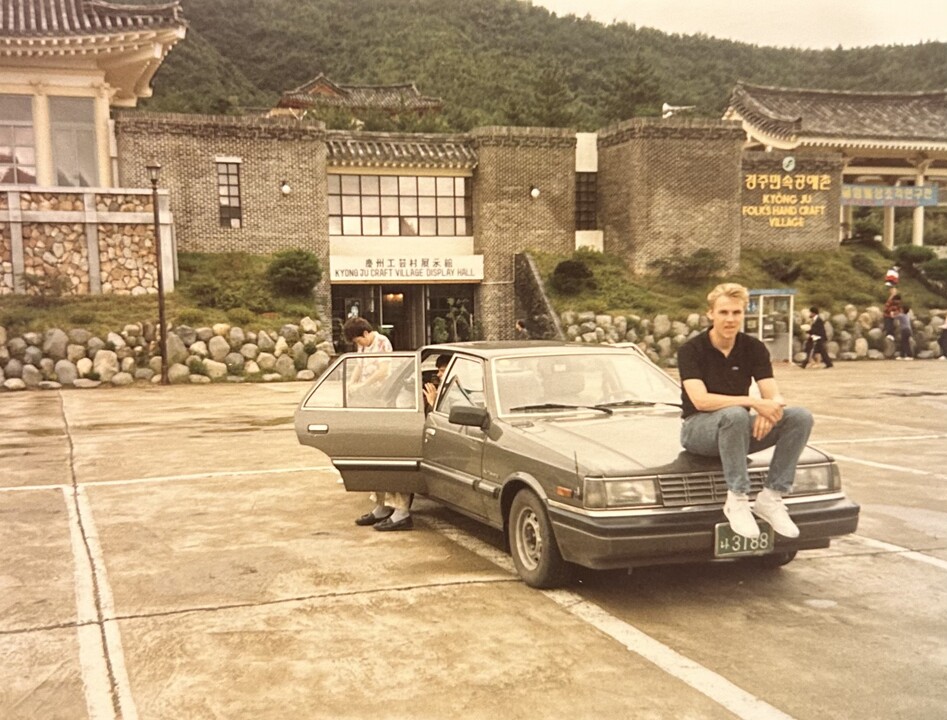
Billy drove the van
Billy drove the van. It was a brown 1980s Ford Transit with the brand "Bally" emblazoned on the side panel. Although the colour is irrelevant, the van symbolized how we approached supply chains in the 1980s. We didn’t have an enterprise resource planning (ERP) system, a warehouse management system, and certainly didn't maintain 120 days of inventory; instead, we relied on Billy and his van.
In 1988, I left the UK for the delights of South Korea where I witnessed first-hand the seismic shift of manufacturing from the West to the East. In hindsight, it was a remarkable time, akin to witnessing the tides of history shifting before one's eyes. I was part of the "marauding garmentos" crew, a motley band of individuals chasing the prize of the lowest cost-per-unit (FOB), a 1980’s Captain Jack Sparrow armed with nothing more than a cost sheet and a purchase order.
This model, driven by the pursuit of cheaper goods via cheaper overall production processes, fueled the global economy across many business sectors. The West soared on the influx of affordable products, while developing nations experienced an industrial revolution of their own, gaining valuable jobs, new skills, and economic momentum. There was and continues to be accusations of "sweatshop labour", a reminder of the human cost behind the relentless drive for efficiency and cost-effectiveness.
Brands and businesses, buoyed by the promise of low-cost sourcing and talent, began to reshape their supply chains, crafting new models based on this comparative advantage. The strategy increased margins, but not without its drawbacks. Lead times stretched to accommodate distant manufacturing hubs, inventories ballooned to buffer against uncertainties, and supply chains revealed themselves to be surprisingly fragile under pressure. Moreover, the environmental toll of this globalized system became increasingly apparent. Carbon emissions soared as goods traversed the globe.
In 2016, the non-profit Digital Supply Chain Institute proposed that supply chains needed to do a “front-side flip”, challenging the conventional wisdom that prioritized lower product costs above all else. DSCI proposed that there was greater value in maximizing sell-through margins, aligning supply chains more closely with new and changing customer demands and ultimately delivering environmental stewardship.
This is even more relevant today as we see the rise in protectionism, demographic shifts, and environmental catastrophe. In addition, the tools needed to execute this “flip” are more widely available: digital product design, integrated planning tools, automation, and Artificial Intelligence/Machine Learning (AI/ML).
Some BTC companies, like Shein, have made the flip, using data and AI to anticipate demand and then using its network of suppliers to deliver product much quicker than traditional supply chains. There are some very real concerns regarding the environmental impact of parts of this model but the technology itself is valid and will ultimately migrate to more traditional BTB models.
I don’t think we can or should revert to a “Billy and his Van” model. There will continue to be value in globally sourcing products, but the tide is turning from sourcing optimization to supply chain optimization. It’s time for a paradigm shift (another 1980’s throwback); it’s time to do a front side flip and build a forward-facing supply chain that delivers value for a new generation of customers.
Having done a little digging, it appears that production of Ford Transit van continued in the UK until 2013, when it was relocated to Turkey.
Senior VP @ KEEN | Product Management, Development, Merchandising, Innovation, Design
2wGreat Read Colin.
CEO, Tech & Services & CEO Food Transformation, Sodexo North America | Trusted People-First Leader | Business Transformation & Growth Executive | Guiding Successful Integrations
3wFascinating perspective, Colin Browne. The "front-side flip" concept perfectly captures the shift needed. AI and data hold immense potential for optimizing entire supply chains, not just costs. Intrigued to see how traditional B2B models can leverage this while finding a balance between automation and the human touch.
Retired Ops Leader
3wWell put Colin!
Self Employed Contract
3wNo comment on young “hood ornament “? All good.
Chief Executive Officer - Footwear, Sporting Goods, Apparel, Tactical Products: Consulting-Metcalfe Consulting
3wWell put,Colin! Time flies. Keep having fun!